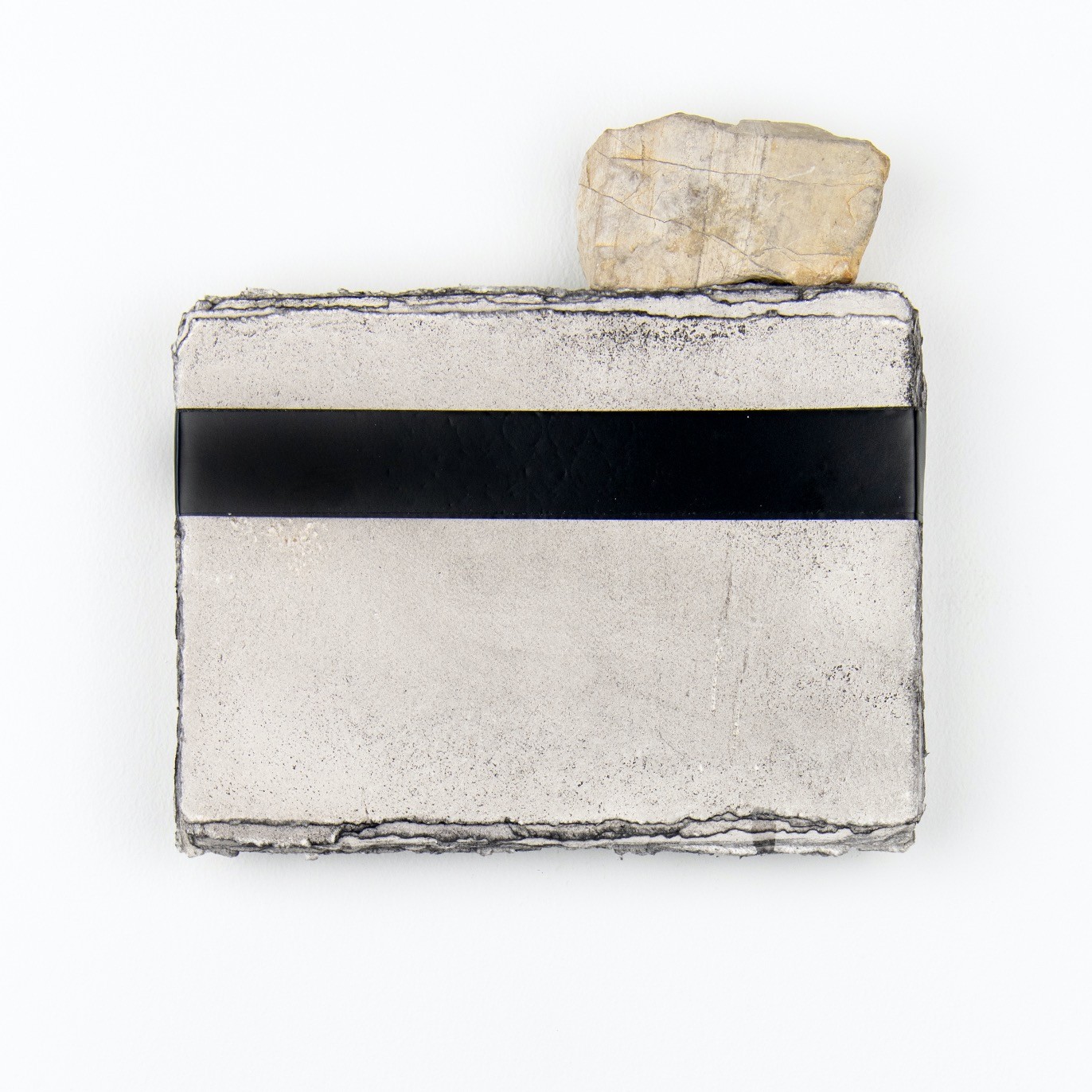Floating Piece - 2020
18 x 18 x 3 cm
Mixed media ink on paper, fragment of rock on the Grigna
Photo © Anne Bruyns
To be in contact with nature
For me, in my research, art is not a simple embellishment of human life but it is one of the ways to be in contact with nature, in its external and internal aspects.
Shanshui's classical Chinese painting
My works are conceptually related to Shanshui's classical Chinese painting. "Landscape" translates from Chinese "Shanshui" which means "mountain water". In Chinese culture, the Mountain and Water are rich in meaning, they embody the fundamental laws of the macrocosmic universe which has links with the microcosm that is the human being. From this vital concept we understand the profound meaning of Mountain-Water that become metaphors of universal transformation. They are two entities that are in a relationship of mutual becoming, just like Yang (Mountain) and Yin (Water).
This concept of transformation is very important: the landscape is not a static reality, it is a relationship, a tension and it’s constantly evolving. Classical Chinese painting gives rise to an aesthetic of passage, reproduces nature without fixing it in static forms. Grasp the vital aspect of the world and put it back into circulation. In this sense I find perfect a concept expressed by Mirò: "The painting must be fruitful, it must give life to a world, something alive".
Water - Mountain
The intimate nature of the landscape BLACK STONE is Water, represented by the black stone that I found on the beaches of Brittany (France), round because smoothed by the sea.
In FLOATING PIECE is the Mountain, the Alps near where I live: I picked up this fragment of rock on the Grigna, a mountain full of rocky pinnacles, the same one that Leonardo Da Vinci knew well and that he represented in many of his paintings, such as "La Vergine delle Rocce "and" La Gioconda ".
Artworks are formed through what is seen and what is not seen
Both nature and painting are formed through what is seen and what is not seen (yang and yin) thanks to an alternation of emptiness and fullness, form and non-form, visible and invisible. The void is not something vague, non-existent, inert, as one can think, but it is a dynamic and acting element. It is precisely the Void that, through the processes of transformation, allows the fullness to reach true fullness.
It is thanks to the Void, to its dialectical value, that one can grasp the rhythm of Space and Time, understand the laws of Transformation.
The Void is at the origin of every form and image.
Void is a sign.
Archaeology fascinates me
Stratification, accumulation and dig are recurring themes in my works, closely linked to the sense of time.
The concept of accumulation that I am interested in investigating is not so much linked to the condition of our consumer society as to the world of archaeology. The characteristic of archaeology is the knowledge through the excavation technique and the consequent stratigraphic reading of the soil residues gradually accumulated. Archaeology fascinates me and helps me to better understand the dynamic process of the world.
Silvia De Marchi
